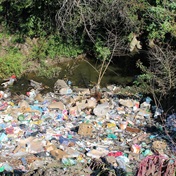
To history buffs, the Covid-19 pandemic must seem eerily familiar.
Almost exactly a century ago, another respiratory virus ripped across the world, killing millions in months. In 1918 and 1919, the so-called Spanish Flu (which actually started elsewhere, possibly in Austria or the US), spread by World War I troop movements, killing between 17 million and 100 million people worldwide.
This catastrophe naturally hurt the economy. The Spanish Flu, unlike Covid-19, tended to kill people in their 20s and 30s - their peak productive years. Additionally, many cities responded to the threat the same way states are now with social distancing.
These included closing schools and churches, banning mass gatherings, mandated mask-wearing and other restrictions.
The combination of fear of the virus and government interventions deeply hurt retail and other business that depended on foot traffic, much as today.
In the US, a 2007 report by the Federal Reserve Bank of St. Louis documents many cases of merchants losing business in Little Rock, Arkansas, and Memphis, Tennessee. But somehow, the country managed to avoid a deep depression in the years right after the pandemic. Unemployment for trade union members rose only a little.
Why didn't the Spanish Flu devastate the economy the way coronavirus has? It’s tempting to conclude that modern-day lockdowns are simply harsher than the distancing measures of 1918. But although data from the era is patchy, the anecdotes in the St. Louis Fed report suggest that retail businesses did suffer enormously, just as now. Fear of the virus, not government restrictions, was likely the biggest driver of lost revenue then as today.
A more important factor was the difference in the structure of the economy. A century ago, less than half of all workers were employed in service industries; now, about 86% are. Manufacturing and agriculture were less vulnerable to the pandemic than retail and other businesses that depended on lots of customer traffic.
The impact of the war economy was a related factor. As some economists have pointed out, WW I was still exerting a tremendous influence on production in 1918. The government simply mandated that factories stay open to meet war needs. This likely made the epidemic worse but reduced the blow to economic output. By the time the economy started shifting back toward peacetime industries, the flu was gone.
A third factor is communications. Today, it is simple enough to find information about the coronavirus with a few taps on one's smartphone or by turning on the news. But neither medium existed in 1918. And thanks to harsh wartime censorship, newspapers were often afraid to print news about the epidemic, lest they be seen as unpatriotic. In fact, the virus is called the Spanish Flu only because Spain was a neutral country in WW I, and thus allowed newspapers to print the grim national death toll. Suppression of information in many other Western powers probably made people more likely to go out and shop - even at the cost of many lives.
Opportunity cost could be a fourth factor. The world of today is much richer than that of 1918; much of what we go out to buy consists of non-essentials such as restaurant meals, fancy haircuts or new electronics. A higher percent of the shopping done a century ago was for household necessities and groceries - things people couldn’t easily choose to give up for a few months.
What about after the pandemic ends? At least two factors will likely make coronavirus’s economic damage last longer than that of the Spanish Flu. First, international supply chains are unwinding across the globe. The pandemic probably will spur countries to offshore less production in the future now that they know the risk; that will be a costly and painful transition. Second, both consumers and businesses are more highly leveraged than they were a century ago, and that debt may combine with the economic shock of the pandemic to cause a balance-sheet recession.
So although the human cost of coronavirus probably will end up being smaller than that of the Spanish Flu, the economic cost may be larger and last longer. The economy of 2020 is simply much more vulnerable to pandemics than the economy of 1918.
Noah Smith is a Bloomberg columnist. Views expressed are his own.




 Publications
Publications
 Partners
Partners











